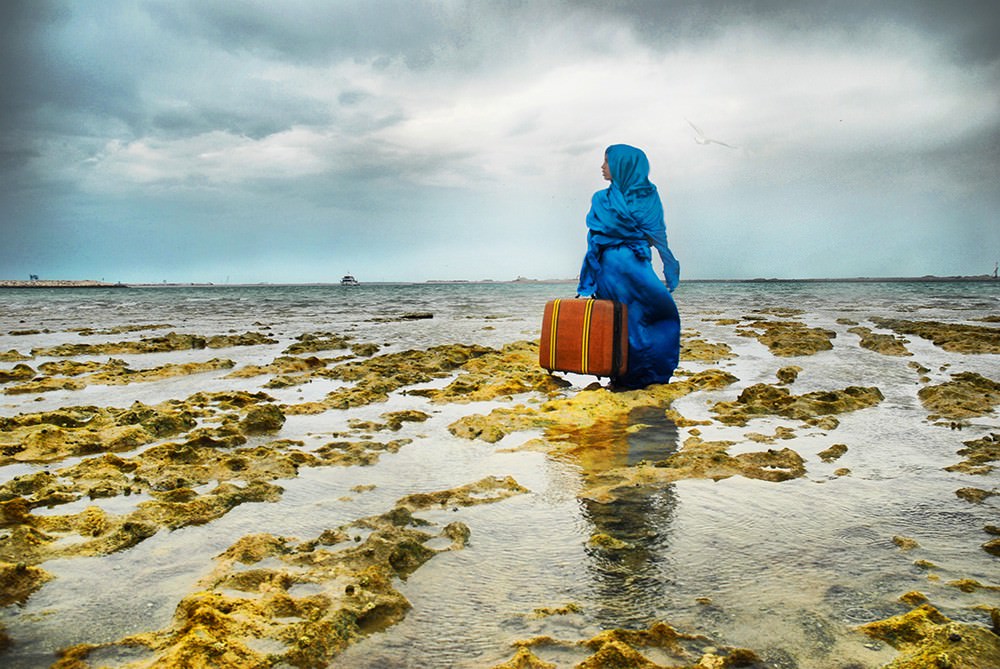
Few individuals have had such a direct impact on the arts movement in the UAE as Sheikha Lateefa bint Maktoum. Lateefa transcends the world of art through charity, education and the contemporary identity of the United Arab Emirates. She is the founder of Tashkeel, a respected art institution that offers courses and a residency program that has been instrumental in supporting and introducing artists, including the renowned eL Seed, to a UAE audience. On a personal level, Lateefa represents both Emirati women and the country at large through her work, helping forge a 21st century character for the young nation though her distinct imagery.
As an artist herself, Lateefa’s work has been featured in exhibitions in the UAE and across the world. In fact when the UAE government initiated a soft diplomacy project, titled Past Forward, to introduce the country to the US audiences through a touring exhibition, three of Lateefa’s works were selected due to their vibrancy and deep-rooted messages. Noor Al Suwaidi, co-curator of Past Forward exhibition, says Lateefa’s “works illustrated a story of development and nostalgia along with a sense of landscape of the UAE and this was one of the stories that we wanted to tell as part of the show.” For instance one of the works titled The Last Look features a woman clad in blue holding a suitcase and looking forward, representing Emirati women’s will to embrace the future while holding on to age old traditions. In the artist’s own lifetime her female compatriots have gone from being students to housewives to holding senior cabinet positions, ambassadorial roles and serving at the helm of major corporations.
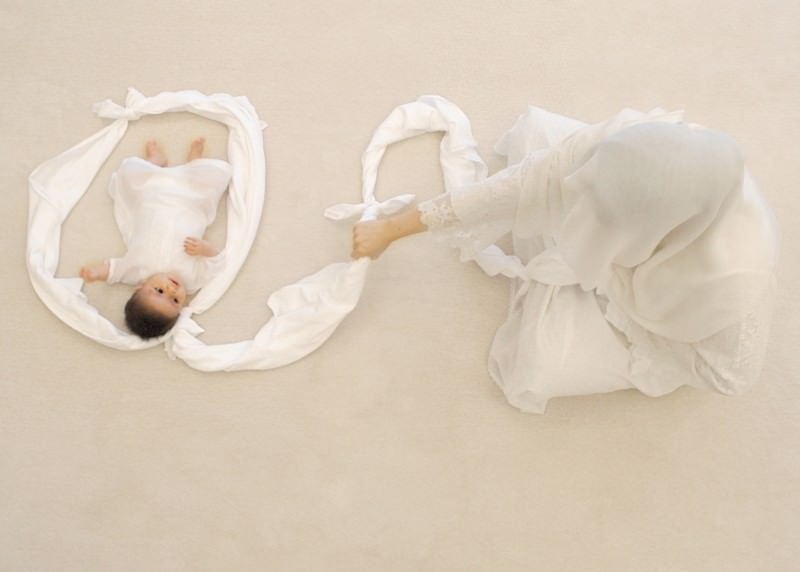
In 2006 the UAE witnessed the loss of its founding Prime Minister, Sheikh Maktoum Bin Rashid, the artist’s own father. For Sheikha Lateefa, the loss of such a monumental figure was unmatched and more than a decade later we see this personal experience reappear in her works, in particular through the current pieces exploring the themes of parenthood and family. Amongst these works is the now famed photograph Sustained Identity, in which the artist has photographed herself from above, sat on the ground wearing white. She is seen with her right hand holding onto a length of textile forming a circle around her newborn child. This circle symbolises both love and trust and reflects a newly-formed bond with this new being that has come into her life. The work represented a new direction for the artist from her previous body of work as it was the first to include the theme of motherhood. In the spring of 2015 Lateefa generously donated this very personal image to an auction in benefit of Noor Dubai, an international charitable initiative for the prevention and treatment of blindness and low vision founded in 2008. I attended the event that took place in April 2015 at Zabeel Ladies Club where there was intense interest in the work from the outset. I overheard several guests and potential bidders asking each other “Is that Sheikha Lateefa and her son?” The lot had an estimated price of between AED 30,000 and AED 37,000 but to everyone’s surprise the bidding kept on going and going between two parties until it eventually stopped at AED 14 million, making it the most expensive work by an Emirati artist sold at a charity auction. The room erupted in applause as all the proceeds from the sale of this work and the others would go to fighting blindness in the developing world.
https://www.instagram.com/p/2D_iC3wJ_q/?utm_source=ig_embed
James Lees from Christies’ conducted the Noor Dubai auction in which Sustained Identity sold for $3.8 million in April 2015. Source: Sheikha Lateefa’s Instagram account.
Sustained Identity‘s record is remarkable and places it third in the list of most expensive photographs ever sold. It is only bested by Andreas Gursky’s Rhein II (1999) which was sold for AED 15.9 million in November 2011 and comes just shy of the amount set by Cindy Sherman’s Untitled #96 (1981) which sold for AED 14.2 million in May 2011; both sales were held at Christie’s New York City. For comparison’s sake, the most expensive photograph sold at a charity auction prior to Sustained Identity was set by Tobolsk Kremlin (2009), taken by former Russian President Dimitry Medvedev, that sold for AED 6.4 million at a fundraiser in Russia in January 2010. This is the kind of money many who read here would dream of obtaining. The identity of the buyer remains anonymous although speculation is that they were from the UAE. However, the significance of the identity of the buyer matters less when considering the substantial funds that were raised for Noor Dubai which in the seven years leading up to the auction had treated 23 million people. After all, the average cost of fighting blindness for Noor Dubai amounts to just over 14 dirhams which means that thanks to the sale proceeds of Sustained Identity almost 1 million visually impaired people will benefit. Sustained Identity was a milestone not only in terms of price but also of subject matter, featuring a personal image of an Emirati woman rather than the customary image of a UAE leader or flag that generally attracts buyers who want to demonstrate allegiance. The work also represented the maturity of the previously marginalised art industry in the UAE into one to be reckoned with.
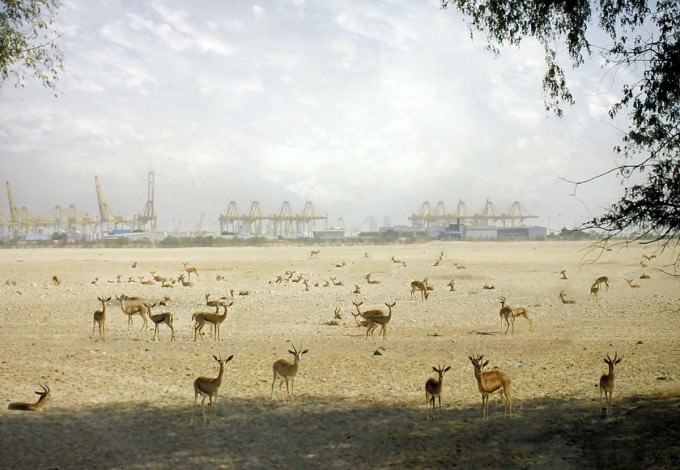
As an art collector I have personally witnessed the appeal and appreciation of Lateefa’s work grow year after year. In February 2016 Barjeel Art Foundation, the arts organisation I founded in 2010, was contacted by the Paris-based Institut du Monde Arabe to inquire about works of artists that they had seen on our website. The Institut, which is celebrating the 30th anniversary of its founding in 2017, was keen on borrowing two works by Lateefa, Reflecting and Observers of Change 1, a photograph that depicts “upturned and wilted palm trees that represent an acute awareness of the conflicting environment of her homeland and the death and rebirth of cities”. The latter was already on loan to the Past Forward exhibition in the US and so the Institut contacted the artist to arrange the loan of another edition. This effectively means that at one point in time there were two editions of the same artwork by Lateefa on display in North America and Europe simultaneously. When I visited the Institut du Monde Arabe to see the exhibition I was proud to find an Emirati female artist’s work displayed prominently at the very entrance of the Jardins d’Orient exhibition.
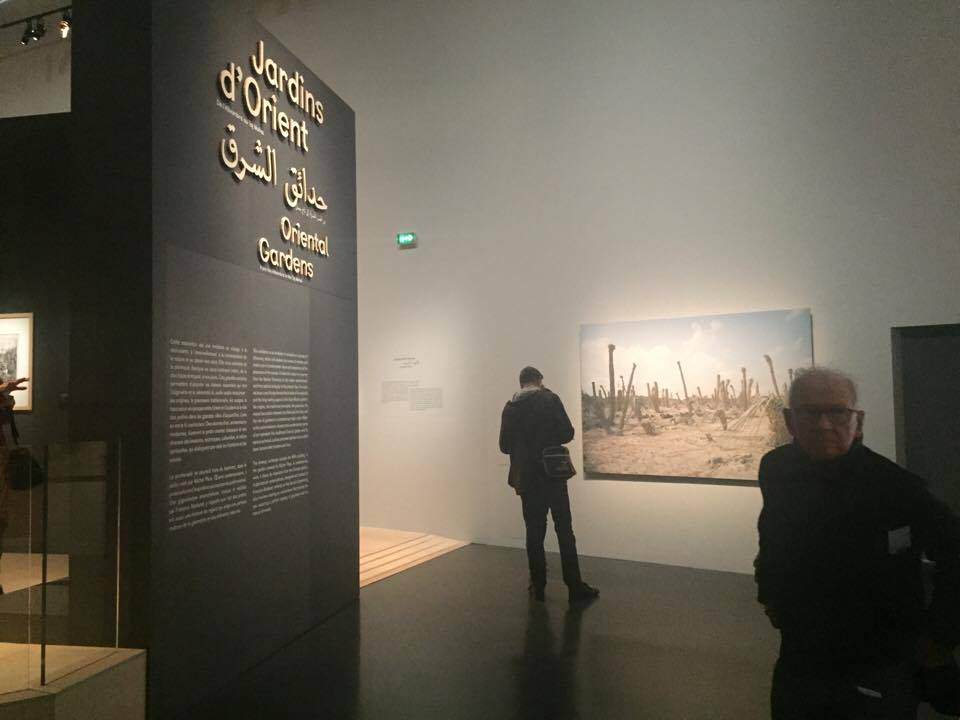
Lateefa’s distinctive images are the result of both her photographic skills and her own imagination?-?drawing on elements of the other worldly, science fiction and surrealism. The observers who appear at a window on a landscape have a dream-like quality when juxtaposed against the backdrop of the changing landscape of the UAE, whose very rapid emergence almost seems like a dream. In Patience, a self-portrait by Lateefa, the artist is seen standing in a room with dangling clocks all set for 4:35 (in what appears to be afternoon as daylight is visible through the window). The artist is holding on to the only rectangular clock, set to 8:10. The yellow and beige colours and the flower pattern of her dress are reflected on the wallpaper behind her. The figure appears distraught with her right arm and hand covering her face; she seems to be grieving over an event that occurred in her life earlier at 8:10 (am?) where the clock has stopped or perhaps concerned about an event that is due to occur at 8:10pm. Viewing some of Lateefa’s work I was personally reminded of Lewis Carroll’s Alice’s Adventures in Wonderland or Guillermo del Toro’s Pan’s Labyrinth.
In Family, 2016, the artist once again revisits the theme of a changing environment, this time standing by her husband’s side as he gently holds her with one arm while she carries their son. The couple gazes upon a landscape that they see changing right before their eyes. From the right we see historical Dubai, perhaps the Shindagha district where the house of her late paternal grandfather Sheikh Rashid Bin Saeed is located. The vista mirrors the Arabic language progression from right to left. Moving from the turn of the 20th century homes we see on one side to the middle of the image, where the development of the industrial and trade status of Dubai in the mid 20th century emerges, with the cranes of Jebel Ali Port. Finally on the left we see the emergence of the contemporary Dubai exemplified by the Burj Khalifa and iconic skyscraper skyline. The parents may be wondering whether by the time their son grows up this view will even be there?
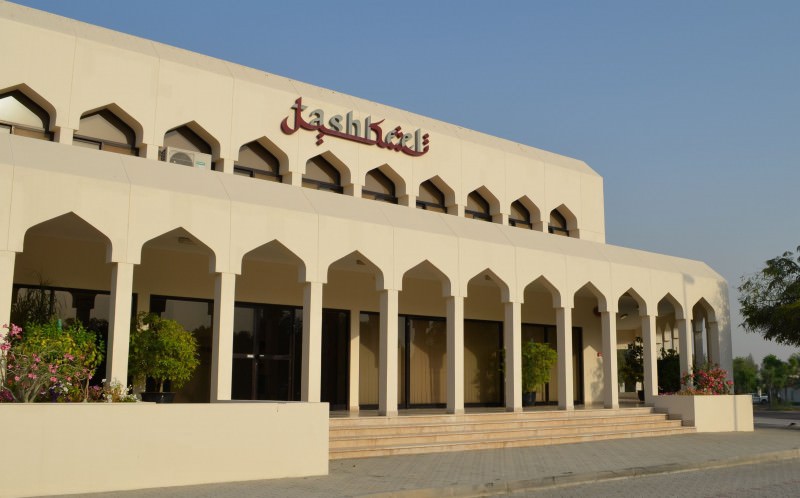
I am often asked by visitors to reinterpret the work of Lateefa which hangs in my home in Dubai. For me, Lateefa’s work is a reflection of the changes that she has witnessed growing up in the UAE over the past 20 years and Dubai’s rise from relative obscurity to global prominence. Another recurrent theme in her digital photography is the environment and the changing landscape of the Emirates as featured in the Observers of Change series of works. Lateefa’s images, rare for an artist from the Gulf, also features the female body and she does not shy from appearing in the photos herself while obscuring her face. Lateefa appears in vibrant colours, which is in contrast to the black abaya that Gulf women wear. This vibrancy reflects a dynamic and confident woman who has managed to share elements of her life while safeguarding more personal details (for instance other than Sustained Identity she only photographs her son from the side or the back).
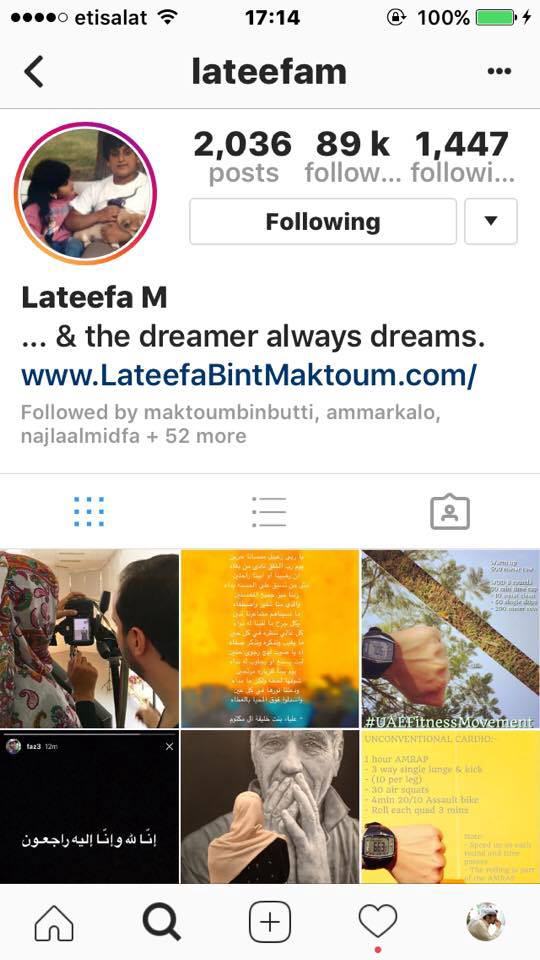
With a reach of more than 89,000 subscribers Lateefa is one of the most followed regional artists on Instagram. Because of the raw and immediate nature of the platform, we are given unique insight into not only her life (she is an unyielding athlete) but also the process in which this influential artist arrives at the final iteration of her work. For instance, we can follow the topographic landscapes that inspire her work such as her visits to the Ras Al Khor nature reserve and her domestic surroundings as well as see her painting skills that we are less exposed to. Lateefa bint Maktoum’s unique character allows her to embrace multiple roles that we see evident in her work as a respected contemporary artist. Contrary to the phrase Observers of Change, the title of one of her most celebrated series, Lateefa is no mere observer. In fact her efforts have directly contributed into turning the UAE’s emergent art movement into a full-fledged industry.
This article was first published in the catalogue of Lateefa bint Maktoum‘s exhibition New Chapter (19 Jan?-?23 Feb 2017) at Tashkeel Studio and Gallery in Dubai. It was then republished in Medium on February 5, 2017. A screenshot of this article can be downloaded here.